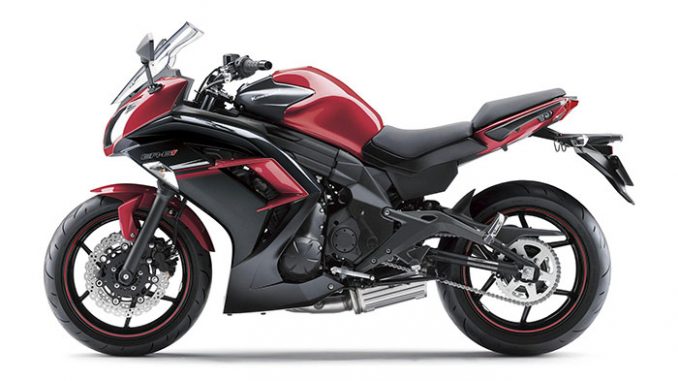
2016 Kawasaki ER-6f
2016 Kawasaki ER-6f Review
2016 Kawasaki ER-6f on www.Totalmotorcycle.com
Escape The City…
Escape the city and discover a new riding reality with the new ER-6f. Lithe sports handling, a narrow profile plus a low, deeply padded seat tell only half the story.
2016 Kawasaki ER-6f www.Totalmotorcycle.com Key Features
New for 2016.
2016 Kawasaki ER-6f www.Totalmotorcycle.com Features and Benefits
All-new double pipe frame
All-new double-pipe perimeter-style frame is a key component of the ER-6f’s identity. Double-pipe design of the new frame, made from high-tensile steel, contributes to the bike’s lightweight appearance.
Increased Wind Protection
Sporty new windscreen is adjustable via use of a hex key. Three positions offer a total range of 60 mm. Wind-tunnel designed aerodynamics package contributes to increased comfort. The new bodywork and windscreen offer better wind protection and were designed to minimise head buffeting.
Rider-friendly Ergonomics
The riding position was specially designed to inspire rider confidence. An ideal relationship between the handlebars, seat and footpegs results in a comfortable and natural position suitable for a wide range of riders.
Taller fuel tank
Fuel tank is 20 mm taller, helping to visually concentrate the Ninja 650’s mass at the front of the bike. The rear of the tank slopes back in a straight line to the seat.
Increased Comfort
Sporty looking tandem seat with thick cushioning ensures good passenger comfort. Ergonomic passenger grips are positioned to make them easy for tandem riders to grab. Good passenger confidence makes it easier for riders when carrying a pillion. Seat bracket is rubber-mounted at the front to reduced vibration transferred through the seat.
New dual headlamp
Sharp dual headlamp design contributes to the more aggressive face of the new ER-6f. The dual headlamp design features twin position lamps – just like on our Ninja supersport models. The sculpted shape of the multi-reflector headlamp’s bulb hoods is an example of the attention given to detail on this model.
Euro-III Compliant
The combination of efficient fuel injection and a 3-way catalyser inside the muffler result in low emissions. Revised muffler internal construction and catalyser layout ensure clean emissions that will pass stringent Euro-III regulations.
New instruments
Stacked instrument cluster features an easier-to-read layout. Multi-function dual-window LCD screen use white LED backlights for excellent visibility at night. The tachometer’s white needle is also highly visible. New features include: remaining range, average/instant fuel consumption and the Economical Riding Indicator.
New bodywork
Deep grooves at the top of the side fairings are evocative of Kawasaki’s new flagship, the ZZR1400. Large openings in the side fairings help with heat dissipation and contribute to the ER-6f’s sporty looks. Built-in turn signals are more compact, contributing to the sporty image. Slimmer lower cowl contributes to the sharp styling.
Compact. quick-revving engine with stronger low-mid range
The Parrallel Twin engine configuration was chosen as the best balance of good power and compact size engine. Tuning delivered more low-mid range torque for more fun and greater usability in daily riding, while maintaining the high-revving character.
More torque in everyday range
Under-engine muffler with larger volume and revised internal construction delivers increased torque in the everyday range below 7,000 rpm. The increased performance facilitates control at lower rpm and contributes to the enhanced enjoyment of the new ER-6f.
Lighter Handling
The rigidity balance of the double-pipe frame and swingarm contributes to a lighter, easier handling package. The swingarm’s new double-pipe design optimizes rigidity. Revised suspension has longer stroke front and rear, offering both sporty handling and enhanced comfort. The longer strokes enable lower spring rates. Damping was revised accordingly.
New swingarm
Following the lines of the frame and rear shock, the swingarm also features the new double-pipe design, complementing the design of the frame and contributing to the ER-6f’s high-quality appearance. The swingarm’s gull-arm style design on the right side enables the more aggressive angle of the muffler.
Optional ABS
Compact new ABS unit has a more advanced processor that enables more precise ABS control.
ABS
Sudden over-application of the brakes, or braking on low-grip surfaces (surfaces with a low coefficient of friction) such as wet asphalt or manhole covers may cause a motorcycle’s wheel(s) to lock up and slip. ABS was developed to prevent such incidents. Kawasaki ABS systems are controlled by high precision and highly reliable programming formulated based on thorough testing of numerous riding situations. By ensuring stable braking performance, they offer rider reassurance that contributes to greater riding enjoyment.
And to meet the special requirements of certain riders, specialised ABS systems are also available. For example, KIBS (Kawasaki Intelligent anti-lock Brake System) is a high-precision brake system designed specifically for supersport models, enabling sport riding to be enjoyed by a wider range of riders. And by linking the front and rear brakes, K-ACT (Kawasaki Advanced Coactive-braking Technology) ABS provides the confidence to enjoy touring on heavyweight models. Kawasaki is continually working on the development of other advanced ABS systems.
Dual Throttle Valves
Late-model sport bikes often use large-bore throttle bodies to generate high levels of power. However, with large diameter throttles, when a rider suddenly opens the throttle, the unrestricted torque response is anything but gentle and often more than the rider can handle. Dual throttle valve technology was designed to tame engine response while contributing to performance.
On fuel-injected models, throttle bodies generally have only one throttle valve per cylinder. On models with dual throttle valves, there are two throttle valves per cylinder: in addition to the main valves, which are physically linked to the throttle grip and controlled by the rider, a second set of valves, opened and closed by the ECU, precisely regulates intake airflow to ensure a natural, linear response. With the air passing through the throttle bodies becoming smoother, combustion efficiency in improved and power is increased.
Like other Kawasaki engine management technology, Dual Throttle Valves were designed with the philosophy of “following the rider’s intention, while providing natural-feeling support.” They are featured on many Kawasaki models.
Economical Riding Indicator
Using high-precision electronic control for engine management, Kawasaki models can achieve a high level of fuel efficiency.
However, fuel consumption is greatly affected by throttle use, gear selection, and other elements under the rider’s control. The Economical Riding Indicator is a function that indicates when current riding conditions are consuming a low amount of fuel. The system continuously monitors fuel consumption, regardless of vehicle speed, engine speed, throttle position and other riding conditions. When fuel consumption is low for a given speed (i.e. fuel efficiency is high), an “ECO” mark appears on the instrument panel’s LCD screen. By riding so that the “ECO” mark remains on, fuel consumption can be reduced.
While effective vehicle speed and engine speed may vary by model, paying attention to conditions that cause the “ECO” mark to appear can help riders improve their fuel efficiency – a handy way to increase cruising range. Further, keeping fuel consumption low also helps minimise negative impact on the environment.
2016 Kawasaki ER-6f – www.Totalmotorcycle.com USA Specifications/Technical Details
US MSRP Price: $NA USD
NA
2016 Kawasaki ER-6f – www.Totalmotorcycle.com Canadian Specifications/Technical Details
Canada MSRP Price: $ See Dealer for pricing in CDN
NA
2016 Kawasaki ER-6f – www.Totalmotorcycle.com European Specifications/Technical Details
Europe/UK MSRP Price: £6,049 ABS, See dealer for pricing on Non-ABS version in GBP (On The Road inc 20% Vat)
Engine
Engine type
Liquid-cooled, 4-stroke Parallel Twin
Displacement
649 cm3
Bore x stroke
83.0 x 60.0 mm
Compression ratio
10.8:1
Valve/Induction system
DOHC, 8 valves
Fuel system
Fuel injection: ø38 mm x 2 (Keihin)
Ignition
Digital
Starting
Electric
Lubrication
Forced lubrication, semi-dry sump
Frame
Frame type
Perimeter, high-tensile steel
Rake/Trail
25o / 110 mm
Wheel travel, front
125 mm
Wheel travel, rear
130 mm
Tyre, front
120/70ZR17M/C (58W)
Tyre, rear
160/60ZR17M/C (69W)
Steering angle, left / right
35? / 35?
Performance
Maximum power
53 kW {72.1 PS} / 8,500 rpm
Limited power version
35 kW and 25 kW
Maximum torque
64 Nom {6.5 kgfom} / 7,000 rpm
Transmission
Transmission
6-speed, return
Final Drive
Sealed Chain
Primary reduction ratio
2.095 (88/42)
Gear ratios: 1st
2.438 (39/16)
Gear ratios: 2nd
1.714 (36/21)
Gear ratios: 3rd
1.333 (32/24)
Gear ratios: 4th
1.111 (30/27)
Gear ratios: 5th
0.966 (28/29)
Gear ratios: 6th
0.852 (23/27)
Final reduction ratio
3.067 (46/15)
Clutch
Wet multi-disc, manual
Brakes
Brakes, front
Type: Dual semi-floating 300 mm petal discs Caliper: Dual piston
Brakes, rear
Type: Single 220 mm petal disc Caliper: Single-piston
Suspension
Suspension, front
41 mm telescopic fork
Suspension, rear
Offset laydown single-shock with adjustable preload
Dimensions
Dimensions (L x W x H)
2,110 mm x 770 mm x 1,180 mm
Wheelbase
1,410 mm
Ground Clearance
130 mm
Fuel capacity
16 litres
Seat height
805 mm
Curb Mass
209 kg / 211 kg (ABS)
*Starting at MSRP is the manufactured suggested price and excludes delivery, setup, tax, title, license, and additional fees and expenses. Bikes may be shown with optional accessories. Final sale price determined by an authorized dealer. Specifications and MSRP are subject to change.
Manufacturer Specifications and appearance are subject to change without prior notice on Total Motorcycle (TMW).


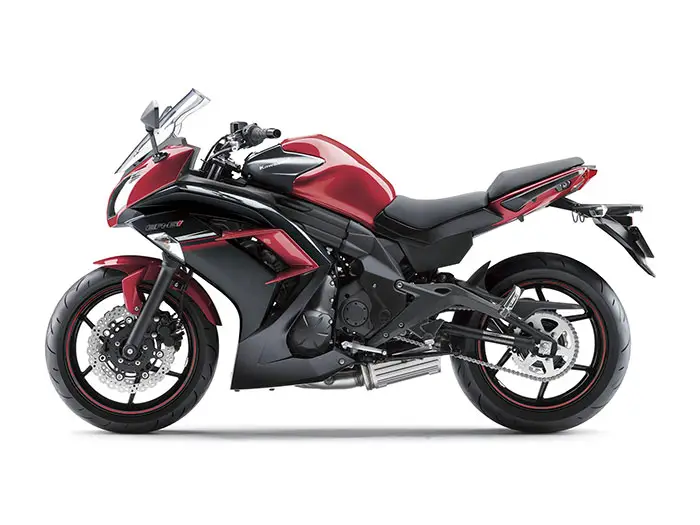
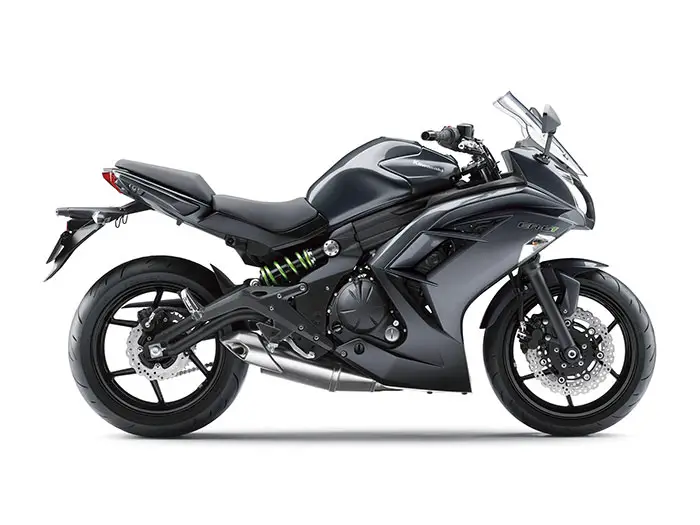
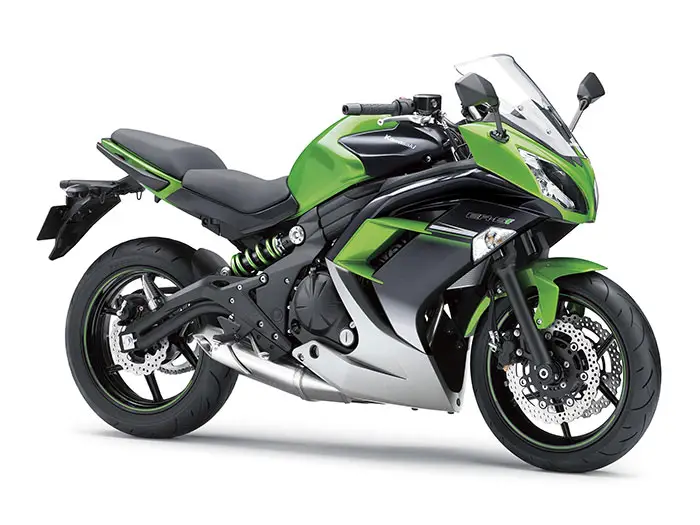
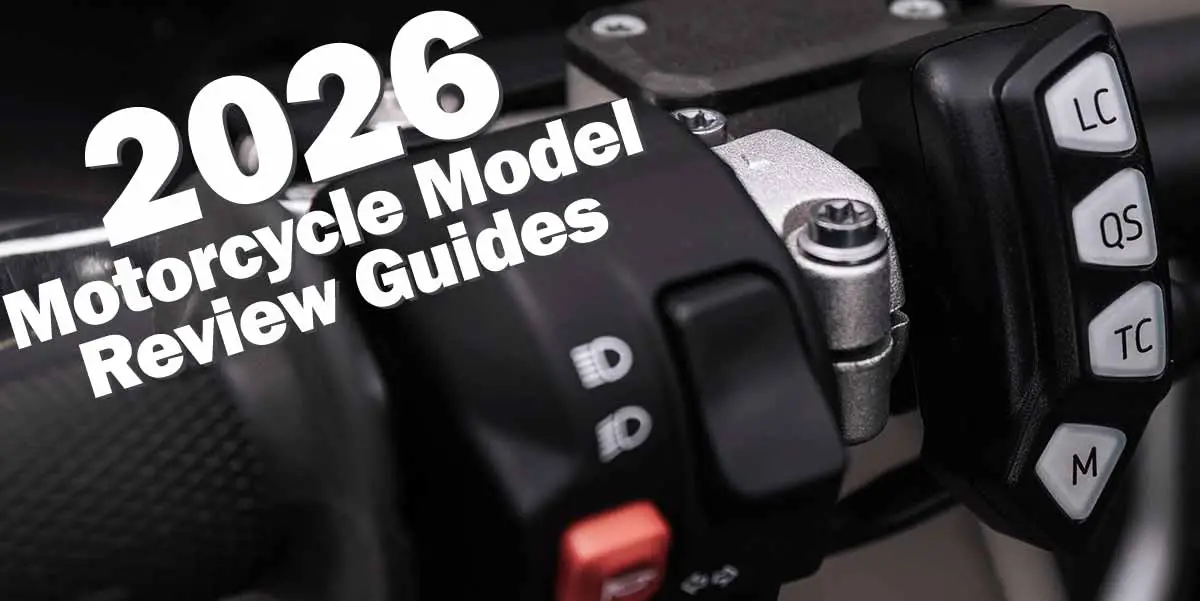


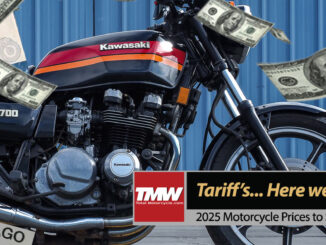
Be the first to comment